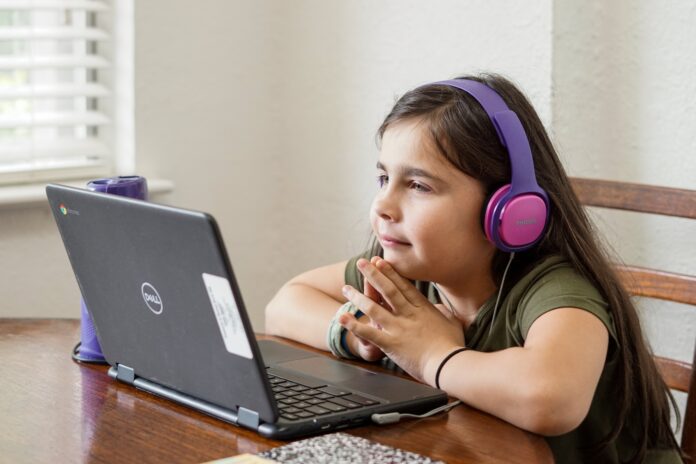In the realm of academia, originality and integrity are paramount. The pursuit of knowledge requires the ability to critically engage with existing ideas while generating fresh insights. However, with the rise of digital technology and the ease of accessing vast amounts of information, the risk of plagiarism has become a pressing concern. To address this challenge, educators and institutions have turned to advanced tools and systems such as Turnitin.
Turnitin, Turnitin, Turnitin – these three words reverberate through the halls of universities and educational institutions worldwide, as they represent a pioneering solution to plagiarism detection and prevention. Developed by iParadigms, Turnitin is a web-based software that has revolutionized the way educators evaluate the authenticity of student work. With its sophisticated algorithms and extensive database, Turnitin has become an indispensable tool for maintaining academic integrity.
At its core, Turnitin is an online plagiarism detection service that compares submitted documents against an extensive database of academic content, including journal articles, books, websites, and previously submitted papers. The software utilizes a combination of text-matching algorithms and machine learning techniques to analyze the submitted work and provide educators with a detailed report highlighting any similarities with existing sources.
When students submit their work to Turnitin, their documents are processed and compared against the vast database of textual content. The software then generates an Originality Report, which identifies sections of the document that may have been copied or paraphrased from other sources. The Originality Report provides a percentage called the Similarity Index, indicating the amount of text in the submitted work that matches existing sources. This index serves as a guide for educators to evaluate the originality and integrity of the document in question.
Beyond its role in plagiarism detection, Turnitin offers a range of features and functionalities to enhance the teaching and learning experience. One such feature is GradeMark, an online grading tool integrated into the Turnitin platform. With GradeMark, educators can provide feedback on student submissions directly within the document, using comment bubbles, highlighters, and other annotation tools. This streamlines the feedback process and enables efficient communication between instructors and students.
Moreover, Turnitin provides a PeerMark feature that allows students to review and evaluate each other’s work. This peer assessment feature promotes critical thinking and collaboration among students while fostering a deeper understanding of the subject matter. Through PeerMark, students can engage in a constructive dialogue, provide feedback on their peers’ submissions, and gain insights from diverse perspectives.
In addition to these features, Turnitin offers an integrated rubric and grading system, enabling educators to establish consistent evaluation criteria and streamline the grading process. This ensures fairness and transparency in assessing student work, while also saving valuable time for instructors.
Another essential aspect of Turnitin is its emphasis on educating students about academic integrity. Rather than solely acting as a policing tool, Turnitin strives to foster a culture of originality and ethical writing. By highlighting instances of potential plagiarism in the Originality Report, Turnitin encourages students to engage in self-reflection and learn from their mistakes. This educational approach promotes academic honesty and helps students develop the necessary skills to avoid plagiarism in the future.
While Turnitin has undoubtedly transformed the landscape of plagiarism detection and prevention, it is not without its criticisms and challenges. Some educators argue that relying solely on Turnitin may create a culture of suspicion, eroding trust between students and instructors. There is concern that the software’s reliance on text-matching algorithms may not always capture the nuances of citation and paraphrasing, leading to false positives and misunderstandings. Furthermore, there are privacy concerns regarding the storage and use of student submissions within the Turnitin database.
To address these concerns, educators must strike a balance between leveraging the benefits of Turnitin and maintaining a supportive learning environment. It is crucial to complement Turnitin with comprehensive education on academic integrity and proper citation practices. By integrating Turnitin into a broader framework of instruction on plagiarism and ethical writing, educators can ensure that students understand the purpose and limitations of the tool while emphasizing the importance of critical thinking and originality.
Furthermore, it is essential for institutions to establish clear policies and guidelines regarding the use of Turnitin. This includes addressing concerns related to privacy and data security. Institutions should inform students about how their work will be stored and used within the Turnitin system and ensure compliance with relevant data protection regulations. Transparency in these matters can help alleviate concerns and foster trust between students, educators, and the institution.
Despite its limitations and criticisms, Turnitin continues to be widely adopted and trusted by educational institutions globally. Its effectiveness in identifying potential instances of plagiarism, combined with its features for providing feedback and promoting peer assessment, has made it an indispensable tool for educators seeking to uphold academic integrity. Turnitin serves as a safeguard, reinforcing the importance of originality and ethical writing in the educational landscape.
Looking ahead, the future of Turnitin lies in its ability to adapt to emerging technologies and evolving academic practices. As the digital landscape continues to evolve, new forms of plagiarism may arise, requiring constant updates and enhancements to the detection algorithms. Turnitin must remain at the forefront of innovation, leveraging artificial intelligence and machine learning to stay ahead of plagiarism trends.
Moreover, Turnitin should strive to offer additional resources and support to educators and students beyond plagiarism detection. This could include providing writing tutorials, citation guides, and workshops on academic integrity. By expanding its offerings to encompass a comprehensive suite of educational tools, Turnitin can play a more proactive role in nurturing a culture of originality and ethical writing.
Turnitin has become a pivotal tool in the fight against plagiarism in academia. Its robust plagiarism detection capabilities, integrated grading and feedback features, and commitment to educational integrity have made it an invaluable resource for educators and institutions worldwide. While it is not without its limitations and challenges, Turnitin continues to evolve and adapt to the ever-changing landscape of academic integrity. By combining the power of technology with comprehensive education on plagiarism and ethical writing, Turnitin has the potential to shape the future of academic integrity and foster a generation of original thinkers and responsible scholars.
As the use of Turnitin becomes more prevalent in educational institutions, it is crucial to consider its impact on teaching and learning. While Turnitin primarily focuses on detecting instances of plagiarism, it is essential to maintain a balanced approach that also encourages critical thinking, creativity, and independent research. Educators must strike a delicate balance between using Turnitin as a tool for plagiarism detection and fostering a supportive environment that nurtures students’ academic growth.
One of the potential risks associated with relying heavily on Turnitin is the temptation to view it as a definitive judge of academic integrity. While the software can identify similarities between documents, it is essential to remember that it does not make judgments on the intention or knowledge of the student. Educators should use Turnitin reports as a starting point for further investigation and engage in conversations with students to understand their thought processes and ensure fair assessments.
Additionally, it is crucial to recognize that Turnitin is just one piece of the puzzle in promoting academic integrity. Educators should supplement the use of Turnitin with comprehensive instruction on proper citation practices, ethical writing, and research methodologies. By empowering students with the skills and knowledge to effectively cite sources, critically evaluate information, and develop their original ideas, institutions can foster a culture of academic integrity that goes beyond the reliance on plagiarism detection tools.
Moreover, educators should provide clear guidelines and expectations regarding the use of Turnitin. Students need to understand how Turnitin fits into the assessment process and what consequences may arise from instances of plagiarism. By establishing a transparent and consistent approach to academic integrity, institutions can ensure that students are aware of the consequences of academic misconduct and the importance of maintaining originality and ethical writing practices.
To enhance the effectiveness of Turnitin and minimize false positives, it is crucial for educators to familiarize themselves with the intricacies of the software. Understanding how Turnitin’s algorithms work and how they interpret similarities in text can help educators interpret the results more accurately. This knowledge can also enable instructors to provide constructive feedback to students based on the specific areas of concern highlighted in the Originality Reports.
Institutions and educators should also consider the ethical implications of using Turnitin. It is essential to strike a balance between maintaining academic integrity and respecting students’ privacy rights. Institutions should develop clear policies regarding the retention and use of student work within the Turnitin database, ensuring compliance with relevant data protection regulations. Furthermore, students should be informed of their rights and have the option to provide consent for the use of their work beyond plagiarism detection.
As technology continues to advance, it is likely that Turnitin will evolve to meet the changing needs of educational institutions. The integration of artificial intelligence and machine learning algorithms may enhance the software’s ability to detect more sophisticated forms of plagiarism, such as paraphrasing and translation-based plagiarism. However, as Turnitin evolves, it is crucial to strike a balance between technological advancements and the preservation of a supportive learning environment that fosters originality and critical thinking.
In conclusion, Turnitin has become a vital tool in promoting academic integrity and deterring plagiarism in educational institutions. Its sophisticated plagiarism detection capabilities, integrated grading features, and educational resources have made it an indispensable asset for educators worldwide. However, it is crucial to recognize that Turnitin is not a panacea for all challenges related to academic integrity. To create a holistic approach to maintaining originality and ethical writing, institutions should supplement the use of Turnitin with comprehensive instruction, clear guidelines, and a supportive learning environment that encourages critical thinking and creativity. By embracing a balanced approach, educators and institutions can leverage the benefits of Turnitin while nurturing students’ academic growth and fostering a culture of integrity in academia.


















